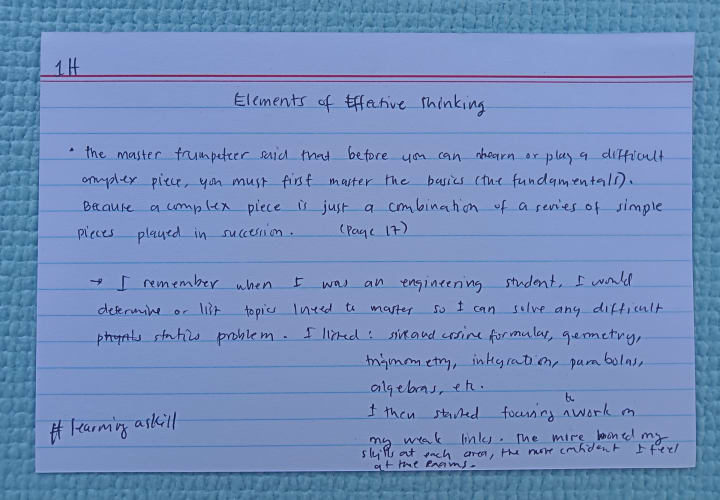An Easy Way for Beginners to Choose What to Write About
Make note of every dumb thought that occurs to you

I used to let fear stop me from writing.
In 2015, I tried to write my first blog post. But I didn’t publish it because I couldn’t get past the first draft.
I never dared to move forward beyond the first draft, for two reasons. One, I didn’t know how to develop a first draft. Two, I felt that my ideas were not good enough.
I thought, ‘Someone out there has written about this topic better than I can do, so why bother writing? I’ll just wait for the day when I have something original and important to write about.’
But that day never came.
Months later. A year later. Two years. Three. Six years. I still haven’t published a single blog post.
Until one day, I read a blog post that changed everything…
The Method
Six months ago I came across a blog post by Austin Kleon.
And from it, I got this gem:
“Make note of every dumb thought that occurs to you throughout the day. Tomorrow morning, pick the thought you think is the least dumb and write more about it.”
- Austin Kleon
A little backstory.
Fourteen months before I read this quote, I started a freewriting practice for at least 10 minutes a day. This is a commitment for myself to do something small every day to become a writer someday.
There were times when I thought of sharing some ideas in public. But, again, my fear of sharing something not good enough prevented me.
Then, I read the quote above.
‘Whoaaaah! This is what I’ve been looking for for years! A concrete, specific, actionable way of choosing what to write about. And most importantly, a reminder that I am allowed to write anything using what I have.’
This least dumb idea mindset helped me change my focus from writing something that will fascinate readers to writing something that fascinates me.
It made me feel that I am the best person to write about my idea, and that I don’t need to focus too much on mind-reading what other people deem interesting or important.
So I embraced it.
And now, six months later, I have written and published one story a week. 25 stories overall. And three of them are published here on Medium (including this piece you’re reading now.) Hooray!

Here are some lessons I’ve learned that works well with the ‘least dumb idea’ method.
1. It’s okay to write for yourself.
Austin Kleon wrote Steal Like an Artist as a piece of advice for his younger self. “This book (Steal),” Austin writes, “is me talking to a previous version of myself.”
Jack Canfield wrote his first book, 100 Ways to Enhance Self-Concept in the Classroom, because he couldn’t find the book he wanted to read. So he wrote it himself.
2. It’s okay not to save the world with your creativity.
Elizabeth Gilbert wrote Eat, Pray, Love to save herself, “All I was trying to do with that book was figure myself out. In the process, though, I wrote a story that apparently helped a lot of other people figure themselves out — but that was never my intention.”
It’s okay to write to help yourself. The surprising thing is, if you’ll write as honestly as you can, your writing can give value to someone.
3. It’s okay to use what you have.
It’s like Seth Godin’s approach to daily blogging. “This is what I noticed today,” Mr. Godin said, “and I thought I’d share it with you.”
How to use the ‘least dumb idea’ method
1. Collect ideas.
If you’re already collecting ideas, great. If you still don’t, you can start now.
I collect ideas and store them in my idea banks. I have two idea banks: one is a pile of notecards; the other is a word document.

2. Choose the least dumb idea.
After I choose my least dumb idea, I ask myself these questions:
• “Is there one person out there who would be happy to learn this idea?”
• “Do I want to spend time exploring or thinking more about this idea?”
For example, I wrote my previous blog post from this notecard:

Feel free to come up with follow-up questions to serve your purpose.
3. Write more about it.
What does the quote remind you of? Write it down. Remember, you don’t need to say everything so others can’t add anything anymore. Just say what you need to say to make your point. Then…
4. Publish.
And celebrate! Even if the result is terrible. As Michael Thompson wrote, “You’ve done what 99% of people in the world couldn’t do.”
Then, start the next one.
Final Thoughts
Imagine you publish one least dumb idea a week.
In one year, you will have 52 stories published, 52 stories that tell the world about your interests and fascinations.
But what about our audience?
We don’t get to decide who’s going to be our audience. People follow people they know, like, and trust. It means your audience will be the people who also care about the same stuff as you do.
So focus on sharing what you’re passionate about, one least dumb idea at a time.
And your audience will find you.
About the Creator
Mark Joseph Aduana
Loves learning about creativity, learning strategies, and effective thinking.






Comments
There are no comments for this story
Be the first to respond and start the conversation.